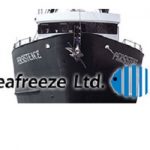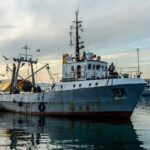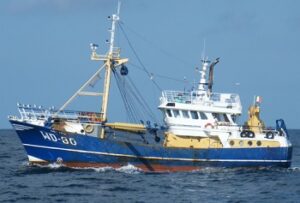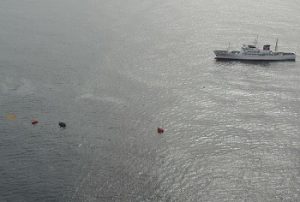Monthly Archives: July 2016
Shutting down ‘shark finning’: US fishermen promise a fight
 American fishermen are digging in for a fight over a proposal to shut down the vestiges of the U.S. harvest of shark fins, prized for soup and traditional medicine in Asia, and send a message to the rest of the world. The traditional “finning” of sharks — in which they are pulled out of the water, have their fins sliced off and are discarded into the sea, often still alive but unable to swim — is already illegal in the U.S., but fishermen are still allowed to hunt sharks and have their fins removed during processing on land. A bill backed by Sen. Cory Booker, a New Jersey Democrat, and others promises to ban the sale and possession of shark fins to ensure U.S. fishermen and seafood dealers no longer participate in the global fin trade. The bill would still allow fishermen to harvest sharks for their meat, though some in the industry say it wouldn’t be worth the cost of business, because much of the value is in the fins. Read the rest here 08:06
American fishermen are digging in for a fight over a proposal to shut down the vestiges of the U.S. harvest of shark fins, prized for soup and traditional medicine in Asia, and send a message to the rest of the world. The traditional “finning” of sharks — in which they are pulled out of the water, have their fins sliced off and are discarded into the sea, often still alive but unable to swim — is already illegal in the U.S., but fishermen are still allowed to hunt sharks and have their fins removed during processing on land. A bill backed by Sen. Cory Booker, a New Jersey Democrat, and others promises to ban the sale and possession of shark fins to ensure U.S. fishermen and seafood dealers no longer participate in the global fin trade. The bill would still allow fishermen to harvest sharks for their meat, though some in the industry say it wouldn’t be worth the cost of business, because much of the value is in the fins. Read the rest here 08:06
National Marine Fisheries Service Announces Final Rule to Adjust the 2016 North and South Atlantic Swordfish Quotas
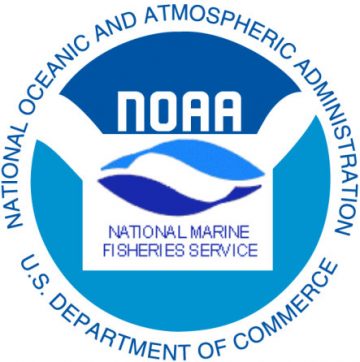 This final rule adjusts the 2016 annual North and South Atlantic swordfish quotas based on 2015 underharvests and international quota transfers, and modifies the annual quota adjustment public notice in certain circumstances. The final adjusted quota for North Atlantic swordfish is 3,359.4 metric tons (mt) dressed weight (dw). This quota is allocated as follows: the directed category quota = 3,009.4 mt dw; the incidental category = 300 mt dw; and the reserve category = 50 mt dw. The final adjusted quota for South Atlantic swordfish is 75.1 mt dw. Read the rest here National Marine Fisheries Service Announces Proposed Rule To Remove Vessel Upgrade Restrictions For Swordfish Directed And Atlantic Tuna Longline Category Limited Access Permits Read the rest here 16:41
This final rule adjusts the 2016 annual North and South Atlantic swordfish quotas based on 2015 underharvests and international quota transfers, and modifies the annual quota adjustment public notice in certain circumstances. The final adjusted quota for North Atlantic swordfish is 3,359.4 metric tons (mt) dressed weight (dw). This quota is allocated as follows: the directed category quota = 3,009.4 mt dw; the incidental category = 300 mt dw; and the reserve category = 50 mt dw. The final adjusted quota for South Atlantic swordfish is 75.1 mt dw. Read the rest here National Marine Fisheries Service Announces Proposed Rule To Remove Vessel Upgrade Restrictions For Swordfish Directed And Atlantic Tuna Longline Category Limited Access Permits Read the rest here 16:41
Prosecutors dismiss charges against indicted fishing magnate Carlos Rafael’s bookkeeper
Federal prosecutors moved Monday to dismiss the charges against Dartmouth resident Debra Messier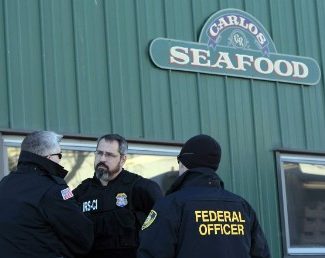 , the longtime bookkeeper for indicted fishing magnate Carlos Rafael, after her case had sat largely idle since her February arrest. The motion clears Messier of potential penalties ahead of Rafael’s federal trial, slated for January 2017 at U.S. District Court in Boston. Rafael and Messier were arrested Feb. 26 on charges of conspiracy and submitting falsified records to the government, after federal authorities raided the Carlos Seafood building on New Bedford’s waterfront.Messier was released from custody the same day on a $10,000 bond. Prosecutors said Monday’s dismissal motion was filed “in the interests of justice.” Prosecutors allege that Rafael, for years and with Messier’s help, lied to federal authorities about the amount and kinds of fish caught by his New Bedford-based fleet, in order to evade federal fishing quotas. Read the story here 14:29
, the longtime bookkeeper for indicted fishing magnate Carlos Rafael, after her case had sat largely idle since her February arrest. The motion clears Messier of potential penalties ahead of Rafael’s federal trial, slated for January 2017 at U.S. District Court in Boston. Rafael and Messier were arrested Feb. 26 on charges of conspiracy and submitting falsified records to the government, after federal authorities raided the Carlos Seafood building on New Bedford’s waterfront.Messier was released from custody the same day on a $10,000 bond. Prosecutors said Monday’s dismissal motion was filed “in the interests of justice.” Prosecutors allege that Rafael, for years and with Messier’s help, lied to federal authorities about the amount and kinds of fish caught by his New Bedford-based fleet, in order to evade federal fishing quotas. Read the story here 14:29
BOEM releases draft plan for Lower Cook Inlet oil leasing
 Residents of Anchor Point, Homer and Seldovia could see drilling rigs off their coasts in the future if the federal Department of the Interior gives it the green light. The Bureau of Ocean Energy Management, the federal agency that oversees offshore drilling on the Outer Continental Shelf, has issued a draft environmental impact statement for oil and gas exploratory leases in Lower Cook Inlet. The proposed leasing area stretches from approximately Ninilchik to just north of Augustine Island, not including Kachemak Bay. The state oversees oil and gas leases on lands within 3 nautical miles of shore, and the federal government has jurisdiction on lands past that. There are currently no rigs in Alaska in federal waters, said John Callahan, a spokesman for the Bureau of Ocean Energy Management. Read the rest here 12:30
Residents of Anchor Point, Homer and Seldovia could see drilling rigs off their coasts in the future if the federal Department of the Interior gives it the green light. The Bureau of Ocean Energy Management, the federal agency that oversees offshore drilling on the Outer Continental Shelf, has issued a draft environmental impact statement for oil and gas exploratory leases in Lower Cook Inlet. The proposed leasing area stretches from approximately Ninilchik to just north of Augustine Island, not including Kachemak Bay. The state oversees oil and gas leases on lands within 3 nautical miles of shore, and the federal government has jurisdiction on lands past that. There are currently no rigs in Alaska in federal waters, said John Callahan, a spokesman for the Bureau of Ocean Energy Management. Read the rest here 12:30
World first Anglesey underwater energy ‘sea kite’ project in licence bid
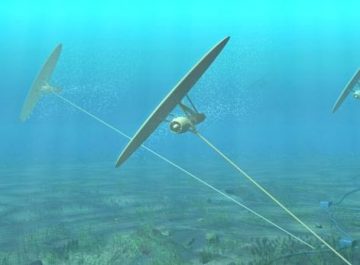 Swedish-based Minesto has applied to fix its underwater energy ‘kites’ in the sea off Holyhead on Anglesey. It is part of plans for a 10MW underwater power plant, supplying the power needs of about 8,000 households. Developers said it would be the first full-scale operation of its kind in the world, following quarter-scale ocean testing off Northern Ireland. The technology uses tidal currents to force water through a turbine as the underwater kites “fly” through the sea. Read the rest here 11:39
Swedish-based Minesto has applied to fix its underwater energy ‘kites’ in the sea off Holyhead on Anglesey. It is part of plans for a 10MW underwater power plant, supplying the power needs of about 8,000 households. Developers said it would be the first full-scale operation of its kind in the world, following quarter-scale ocean testing off Northern Ireland. The technology uses tidal currents to force water through a turbine as the underwater kites “fly” through the sea. Read the rest here 11:39
Joe Henry, ‘the fox’ of lobstermen, to lead Stonington’s Blessing of Fleet parade on Sunday
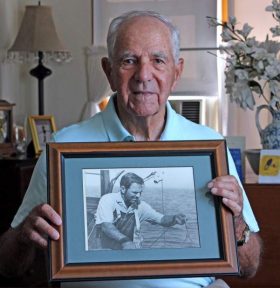 Back in the day, Joe Henry was really good at lobstering, so good in fact, that his fellow lobstermen in the Borough would call him “the fox” because he was so sly, knew all the best places to find the crustaceans and would always bring in the largest catch. “I did it for a good 50 years and would often bring in 200 to 300 pounds in one tide. Those were the good old days,” the 90-year-old resident said while holding a photo of himself lobstering nearly 40 years ago. “I was a lobsterman all my life. It’s just what I did.” His dedication to the local fishing and lobstering industry and to the sea is the reason that Mike and Georgia Crowley, organizers of the 63rd annual Blessing of the Fleet, asked him to be the grand marshal for the procession during this year’s event. Read the rest here 10:39
Back in the day, Joe Henry was really good at lobstering, so good in fact, that his fellow lobstermen in the Borough would call him “the fox” because he was so sly, knew all the best places to find the crustaceans and would always bring in the largest catch. “I did it for a good 50 years and would often bring in 200 to 300 pounds in one tide. Those were the good old days,” the 90-year-old resident said while holding a photo of himself lobstering nearly 40 years ago. “I was a lobsterman all my life. It’s just what I did.” His dedication to the local fishing and lobstering industry and to the sea is the reason that Mike and Georgia Crowley, organizers of the 63rd annual Blessing of the Fleet, asked him to be the grand marshal for the procession during this year’s event. Read the rest here 10:39
Shrimpers say blackgill mystery may wait in the St. Simons Sound
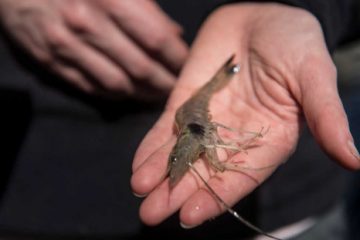 The crippling blackgill disease first appeared in local waters during the 1996 shrimping harvest, roughly six years after the last time state officials had permitted trawlers to operate in the St. Simons Sound. The parasitic disease, which affects reproduction and vigor in shrimp, is already showing up in the 2016 harvest that started June 1. It marks the earliest point in the season that blackgill has ever appeared in the harvest, according to Lindsey Aubart, a marine biologist with the state Department of Natural Resources. Scientists and marine biologists such as Aubart have studied the blackgill problem for years in search of a source and solution to the mysterious disease, which occurs from the Chesapeake Bay to the Gulf of Mexico but is most prominent in the waters of Georgia and South Carolina. Locally, a lot of experienced shrimpers suspect the answers may be found in those long-fallow shrimping waters of the St. Simons Sound. Read the rest here 08:46
The crippling blackgill disease first appeared in local waters during the 1996 shrimping harvest, roughly six years after the last time state officials had permitted trawlers to operate in the St. Simons Sound. The parasitic disease, which affects reproduction and vigor in shrimp, is already showing up in the 2016 harvest that started June 1. It marks the earliest point in the season that blackgill has ever appeared in the harvest, according to Lindsey Aubart, a marine biologist with the state Department of Natural Resources. Scientists and marine biologists such as Aubart have studied the blackgill problem for years in search of a source and solution to the mysterious disease, which occurs from the Chesapeake Bay to the Gulf of Mexico but is most prominent in the waters of Georgia and South Carolina. Locally, a lot of experienced shrimpers suspect the answers may be found in those long-fallow shrimping waters of the St. Simons Sound. Read the rest here 08:46
When residents of an Alaska fishing village can’t fish, normal life comes to an end
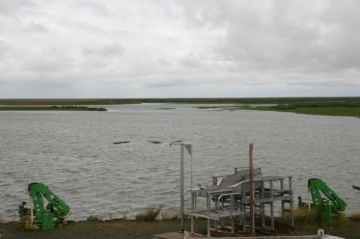 Expensive fishing nets sit on the hardware store shelves, unsold. Families struggle to buy baby diapers, back-to-school clothes and gasoline for boats that take them to favorite berry-picking spots. Some people have seen their water cut off for lack of payment. Normal life is being upended in Quinhagak, a Southwest Alaska fishing village with no fishing this year for the commercial fleet. Skiffs are ready, kings were plentiful, silvers are starting to show up and brokers from the Seattle area who flew to the village say markets are eager for wild Alaska salmon. Frustrated fishermen and village leaders say the problem is their region’s community development nonprofit, which they say provides high salaries for executives and generous stipends for board members but no extra relief for this new stress in what’s already one of the poorest parts of the United States. “They left us with nothing,” said Frank Hill, 44, who had worked as dock supervisor for Coastal Villages. “It’s hard when you have five kids to take care of.” Read this story here 08:23
Expensive fishing nets sit on the hardware store shelves, unsold. Families struggle to buy baby diapers, back-to-school clothes and gasoline for boats that take them to favorite berry-picking spots. Some people have seen their water cut off for lack of payment. Normal life is being upended in Quinhagak, a Southwest Alaska fishing village with no fishing this year for the commercial fleet. Skiffs are ready, kings were plentiful, silvers are starting to show up and brokers from the Seattle area who flew to the village say markets are eager for wild Alaska salmon. Frustrated fishermen and village leaders say the problem is their region’s community development nonprofit, which they say provides high salaries for executives and generous stipends for board members but no extra relief for this new stress in what’s already one of the poorest parts of the United States. “They left us with nothing,” said Frank Hill, 44, who had worked as dock supervisor for Coastal Villages. “It’s hard when you have five kids to take care of.” Read this story here 08:23
Maine fishermen testing a ‘game-changer’ for protected cod in the Gulf of Maine
 Like many Maine fishermen, Bryan Kelley faces a dilemma as he looks to diversify beyond the lobster that account for the bulk of his catch. To target pollock, which are relatively common in the Gulf of Maine, he has to fish in the same areas frequented by cod, a type of groundfish protected through strict federal catch limits. “We literally have to stay away from the codfish,” Kelley said while standing on his 40-foot boat moored in the Five Islands harbor of Georgetown. “I could fill this with codfish if I wanted to, but that wouldn’t help anybody in this sector and that is not why we are out here.” To help him catch the groundfish he wants and avoid the species he doesn’t, Kelley has begun experimenting with a contraption akin to a conventional fishing reel on steroids and with an electronic brain. The “automatic jigging machines” loaned to Kelley and a handful of other fishermen by The Nature Conservancy allow them to more accurately target the water column where pollock hang out and stay off the bottom where cod lurk. Read the rest here 07:49
Like many Maine fishermen, Bryan Kelley faces a dilemma as he looks to diversify beyond the lobster that account for the bulk of his catch. To target pollock, which are relatively common in the Gulf of Maine, he has to fish in the same areas frequented by cod, a type of groundfish protected through strict federal catch limits. “We literally have to stay away from the codfish,” Kelley said while standing on his 40-foot boat moored in the Five Islands harbor of Georgetown. “I could fill this with codfish if I wanted to, but that wouldn’t help anybody in this sector and that is not why we are out here.” To help him catch the groundfish he wants and avoid the species he doesn’t, Kelley has begun experimenting with a contraption akin to a conventional fishing reel on steroids and with an electronic brain. The “automatic jigging machines” loaned to Kelley and a handful of other fishermen by The Nature Conservancy allow them to more accurately target the water column where pollock hang out and stay off the bottom where cod lurk. Read the rest here 07:49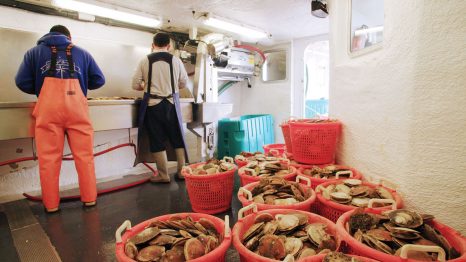
Sea Scallop Documentary To Be Screened At the 25th annual Woods Hole Film Festival August 3 at 6 PM
Over the past two decades, the unassuming sea scallop has brought on a quiet revolution in East Coast fisheries, one based on cooperation between fishermen, scientists, and government managers. In the 35-minute documentary “Sustaining Sea Scallops,” Woods Hole-based filmmakers Daniel Cojanu and Elise Hugus ask if this cooperative research approach could be the new model for beleaguered fisheries. Premiering at the 25th annual Woods Hole Film Festival on August 3 at 6 PM, with a repeat screening on August 5 at 7 PM before the feature documentary “The Memory of Fish,” “Sustaining Sea Scallops” tells a rare tale of renewal in a commercial fishery. The documentary brings audiences back to 1999, when fisheries closures and bankruptcy prompted the sea scallop industry to start funding research to improve catch efficiency, while simultaneously minimizing environmental impacts. Fifteen years later, the Atlantic sea scallop fishery is hailed as one of the most sustainable and lucrative in the world, with New Bedford ringing in as the highest-grossing port in the nation. Read the rest here 20:11
Shark liver, giant squid, and commercial fish species on seal sea-food-and-eat-it diet
A first of its kind study may make selfie-snapping tourists take a step back from the seemingly indolent New Zealand fur seals 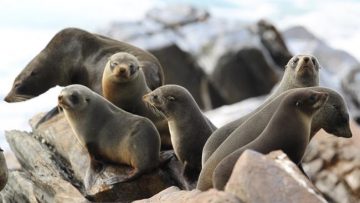 scattered around our craggy coastlines. A study of the DNA in the seals’ faeces is revealing their true identity when they hit the water, from the bottom up – through their diet. Analysis of the samples collected around New Zealand gives a much more accurate picture of what they eat than before. It includes giant squid and sharks. Big sharks. However these Hannibal Lecters of the ocean are nonchalant about taking on the feared predators: they just eat the nutrient rich livers of the sharks and some stomach. Their diet also includes commercial fish species, which make up 10 per cent of the species identified. One of the study’s authors, Lincoln University Associate Professor Adrian Paterson, says up to 46 fish, and 18 squid and octopi, species were taken at any one sample site. Read the rest here 19:32
scattered around our craggy coastlines. A study of the DNA in the seals’ faeces is revealing their true identity when they hit the water, from the bottom up – through their diet. Analysis of the samples collected around New Zealand gives a much more accurate picture of what they eat than before. It includes giant squid and sharks. Big sharks. However these Hannibal Lecters of the ocean are nonchalant about taking on the feared predators: they just eat the nutrient rich livers of the sharks and some stomach. Their diet also includes commercial fish species, which make up 10 per cent of the species identified. One of the study’s authors, Lincoln University Associate Professor Adrian Paterson, says up to 46 fish, and 18 squid and octopi, species were taken at any one sample site. Read the rest here 19:32
Kinky capelin fish clog traffic in Newfoundland
 ST. JOHN’S, N.L. — In eastern Newfoundland, nothing clogs traffic like kinky sex on the beach. On any given day for the past week or so, hundreds of people have been parking indiscriminately near a small town north of St. John’s to get to the annual “capelin roll” — a sometimes spectacular event that is as unusual as it is unpredictable. When the tide is high and conditions are just right, tens of thousands of the small, silvery fish start washing ashore on two rocky beaches to spawn, often in a wriggling, writhing mass that can seem biblical in proportions. The orgy ends when the males die. “For someone who has never seen it, it’s quite phenomenal,” said John Kennedy, mayor of Logy Bay-Middle Cove-Outer Cove. But most of the people who show up at the beaches at Middle Cove and Outer Cove aren’t there just to gawk. For centuries, locals have been coming to these beaches — and to several other, more-secluded spots around the province — to scoop up the fish and bring them home to eat. Read the rest here 11:15
ST. JOHN’S, N.L. — In eastern Newfoundland, nothing clogs traffic like kinky sex on the beach. On any given day for the past week or so, hundreds of people have been parking indiscriminately near a small town north of St. John’s to get to the annual “capelin roll” — a sometimes spectacular event that is as unusual as it is unpredictable. When the tide is high and conditions are just right, tens of thousands of the small, silvery fish start washing ashore on two rocky beaches to spawn, often in a wriggling, writhing mass that can seem biblical in proportions. The orgy ends when the males die. “For someone who has never seen it, it’s quite phenomenal,” said John Kennedy, mayor of Logy Bay-Middle Cove-Outer Cove. But most of the people who show up at the beaches at Middle Cove and Outer Cove aren’t there just to gawk. For centuries, locals have been coming to these beaches — and to several other, more-secluded spots around the province — to scoop up the fish and bring them home to eat. Read the rest here 11:15
Papahanaumokuakea: Hawaii Fishermen get no response from Obama, Schatz
 U.S. Sen. Brian Schatz, D-Hawaii, has yet to respond to a June 20th request to meet with the Western Pacific Regional Fishery Management Council on his proposal to expand the size of the Papahanaumokuakea Marine National Monument fourfold. Also unanswered are letters sent by the council to President Obama on April 8 and July 14, 2016, with concerns about the impact to Hawaii’s fisheries of the proposals by Schatz and by seven Native Hawaiians in January 2016 that the president expand the monument using his authority under the Antiquities Act. Council Chair Edwin Ebisui Jr., Executive Director Kitty M. Simonds and Vice Chairs McGrew Rice, William Sword, John Gourley and Michael Duenas reminded the Senator that the Council has federal jurisdiction over the waters within the Northwestern Hawaiian Islands beyond the current monument boundaries under the Magnuson-Stevens Fishery Conservation and Management Act of 1976. “We are dismayed that you did not consult with the prior to distribution of your letters, which have proliferated unsubstantiated statements through the media,” the council wrote to Schaltz. Read the rest here 10:13
U.S. Sen. Brian Schatz, D-Hawaii, has yet to respond to a June 20th request to meet with the Western Pacific Regional Fishery Management Council on his proposal to expand the size of the Papahanaumokuakea Marine National Monument fourfold. Also unanswered are letters sent by the council to President Obama on April 8 and July 14, 2016, with concerns about the impact to Hawaii’s fisheries of the proposals by Schatz and by seven Native Hawaiians in January 2016 that the president expand the monument using his authority under the Antiquities Act. Council Chair Edwin Ebisui Jr., Executive Director Kitty M. Simonds and Vice Chairs McGrew Rice, William Sword, John Gourley and Michael Duenas reminded the Senator that the Council has federal jurisdiction over the waters within the Northwestern Hawaiian Islands beyond the current monument boundaries under the Magnuson-Stevens Fishery Conservation and Management Act of 1976. “We are dismayed that you did not consult with the prior to distribution of your letters, which have proliferated unsubstantiated statements through the media,” the council wrote to Schaltz. Read the rest here 10:13
Maturing Oyster Recovery Projects Bring Calls for Money
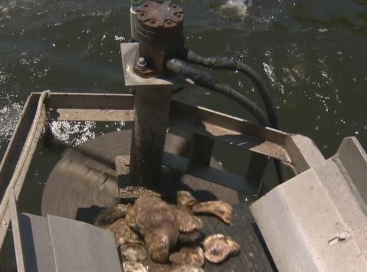 Oysters were once so abundant in New Jersey that vacationers would clamber off trains, wade into the water and pluck handfuls to roast for dinner. Their colonies piled so high that boats would sometimes run aground on them, and they were incorporated into navigation maps. Even earlier, Native American tribes would have oyster feasts on the banks of coastal inlets. But over the centuries, rampant development, pollution, overharvesting and disease drastically reduced the number of oysters, here and around the country; many researchers and volunteer groups estimate oyster populations are down 85 percent from their levels in the 1800s. That has sparked efforts throughout the coastal United States to establish new oyster colonies, or fortify struggling ones. Read the story here 09:58
Oysters were once so abundant in New Jersey that vacationers would clamber off trains, wade into the water and pluck handfuls to roast for dinner. Their colonies piled so high that boats would sometimes run aground on them, and they were incorporated into navigation maps. Even earlier, Native American tribes would have oyster feasts on the banks of coastal inlets. But over the centuries, rampant development, pollution, overharvesting and disease drastically reduced the number of oysters, here and around the country; many researchers and volunteer groups estimate oyster populations are down 85 percent from their levels in the 1800s. That has sparked efforts throughout the coastal United States to establish new oyster colonies, or fortify struggling ones. Read the story here 09:58
‘End of my life’: Plant fire a double hit for fishing family in Norman’s Cove-Long Cove
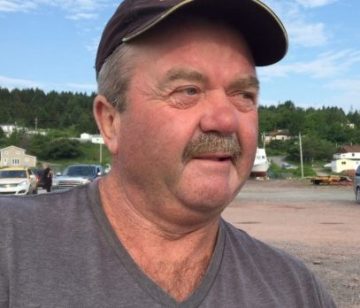 The fiery destruction of the Dorset Fisheries plant in Norman’s Cove-Long Cove is a life-changing hit for one family in the community. Dave Cooper and his wife both relied on the fish plant for their living. He was a fisherman, and she was a plant worker for a number of years, he says. Now they are both out of work, and wondering about their future. “The end of my life…I suppose, in one sense,” Cooper said of the fire. “I’ve got a lot of gear gone, no place to sell my fish, my wife’s out of work.” A fire that broke out Thursday evening has completely destroyed the fish plant, the main employer in the small town. It has left many wondering about their future, and the future of their community. Video, Read the rest here 08:50
The fiery destruction of the Dorset Fisheries plant in Norman’s Cove-Long Cove is a life-changing hit for one family in the community. Dave Cooper and his wife both relied on the fish plant for their living. He was a fisherman, and she was a plant worker for a number of years, he says. Now they are both out of work, and wondering about their future. “The end of my life…I suppose, in one sense,” Cooper said of the fire. “I’ve got a lot of gear gone, no place to sell my fish, my wife’s out of work.” A fire that broke out Thursday evening has completely destroyed the fish plant, the main employer in the small town. It has left many wondering about their future, and the future of their community. Video, Read the rest here 08:50
Is the Japanese eel industry on the slippery slope to extinction?
 “Eel has been loved in Japan for millennia,” Murakami says. “It’s crucial that we continue this ancient Japanese food culture.” The eating of freshwater eel — or unagi — is a culinary romance that has lasted more than 5,000 years. Indeed, eel bones have been found in shell mounds dating back to the Jomon Period, which lasted from around 10,000 B.C. to 200 B.C.,, Consequently, the majority of eel that makes it onto dining tables nationwide has been imported from China and Taiwan since the 1990s. According to the 2015 fisheries ministry survey, eel imports now account for approximately 60 percent of the domestic eel supply, with a large quantity of the fish being processed into kabayaki in China and shipped to Japan in a ready-to-cook form. According to another survey released this month by the fisheries ministry, the market price of baby eel — also known as elvers or glass eels — is currently ¥1,820,000 ($17,142 usd) per kilogram. By contrast, the market price of baby eel was ¥160,000 per kilogram In 2003, less than 10 percent of the existing price. Interesting article, read the rest here 17:29
“Eel has been loved in Japan for millennia,” Murakami says. “It’s crucial that we continue this ancient Japanese food culture.” The eating of freshwater eel — or unagi — is a culinary romance that has lasted more than 5,000 years. Indeed, eel bones have been found in shell mounds dating back to the Jomon Period, which lasted from around 10,000 B.C. to 200 B.C.,, Consequently, the majority of eel that makes it onto dining tables nationwide has been imported from China and Taiwan since the 1990s. According to the 2015 fisheries ministry survey, eel imports now account for approximately 60 percent of the domestic eel supply, with a large quantity of the fish being processed into kabayaki in China and shipped to Japan in a ready-to-cook form. According to another survey released this month by the fisheries ministry, the market price of baby eel — also known as elvers or glass eels — is currently ¥1,820,000 ($17,142 usd) per kilogram. By contrast, the market price of baby eel was ¥160,000 per kilogram In 2003, less than 10 percent of the existing price. Interesting article, read the rest here 17:29
Confusion, rancor, and yes, fear, after LIPA wind farm meeting postponed
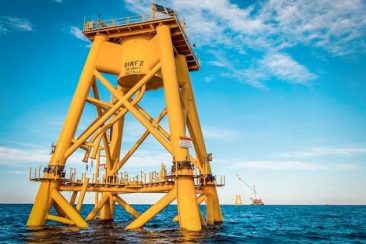 New York State’s decision to postpone LIPA’s consideration of an offshore wind farm that is popular with environmentalists prompted confusion and rancor in its aftermath, as the Cuomo administration works on a wind-energy blueprint that could include other areas directly off Long Island. LIPA trustees had been scheduled to vote last Wednesday on a 90-megawatt wind-farm proposal by developer Deepwater Wind in the federal Rhode Island wind-energy area 30 miles from Montauk Point. But a late-night decision by NYSERDA prompted cancellation of the board meeting, an unprecedented move, and postponement of the vote. The state’s decision to postpone the trustee vote disappointed Long Island environmentalists and at least one East End official, who have expressed frustration for years about LIPA’s on-again, off-again wind ambitions. One group was rumored to have bought Champagne for the board meeting. “It’s awful, pulling a major meeting like this at the last minute,” said Gordian Raacke, executive director of Renewable Energy Long Island and a longtime advocate for solar and wind power. “It causes a lot of uncertainty and it scares people. lol! ok! “Those [potential] wind-energy areas would destroy multiple fisheries,” said Meghan Lapp, fisheries liaison for Seafreeze Ltd., a Rhode Island commercial fishing group. Added Drew Minkiewicz, an attorney for the Fisheries Survival Fund, representing commercial scallopers, “All of them [wind-energy areas] are right smack dab in the middle of scallop grounds.” Now, that’s scary. Read the rest here 15:29
New York State’s decision to postpone LIPA’s consideration of an offshore wind farm that is popular with environmentalists prompted confusion and rancor in its aftermath, as the Cuomo administration works on a wind-energy blueprint that could include other areas directly off Long Island. LIPA trustees had been scheduled to vote last Wednesday on a 90-megawatt wind-farm proposal by developer Deepwater Wind in the federal Rhode Island wind-energy area 30 miles from Montauk Point. But a late-night decision by NYSERDA prompted cancellation of the board meeting, an unprecedented move, and postponement of the vote. The state’s decision to postpone the trustee vote disappointed Long Island environmentalists and at least one East End official, who have expressed frustration for years about LIPA’s on-again, off-again wind ambitions. One group was rumored to have bought Champagne for the board meeting. “It’s awful, pulling a major meeting like this at the last minute,” said Gordian Raacke, executive director of Renewable Energy Long Island and a longtime advocate for solar and wind power. “It causes a lot of uncertainty and it scares people. lol! ok! “Those [potential] wind-energy areas would destroy multiple fisheries,” said Meghan Lapp, fisheries liaison for Seafreeze Ltd., a Rhode Island commercial fishing group. Added Drew Minkiewicz, an attorney for the Fisheries Survival Fund, representing commercial scallopers, “All of them [wind-energy areas] are right smack dab in the middle of scallop grounds.” Now, that’s scary. Read the rest here 15:29
On the verge of a premature Commercial bluefish shutdown, Senator Schumer fires off a letter!
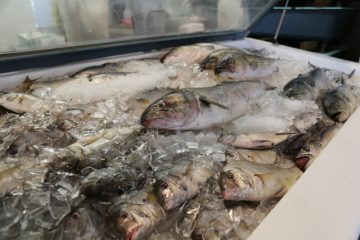 The decision, which could be made any day now, is based on data from the Marine Recreation Information Program, which is the program NOAA uses to record all of its recreational fishing data. Recent data shows a high number of bluefish were caught last year by recreational fishers. The DEC, however, has argued in a letter sent to NOAA that it finds the data “troubling” and is urging officials to reevaluate the findings. On Monday, Senator Charles Schumer (D-NY) also called on NOAA to take a second look, writing in a letter to the organization that “any decision on bluefish fishing season must be based on up-to-date science, period.” Mr. Schumer’s request follows a letter sent to NOAA last Tuesday by DEC commissioner Basil Seggos, who expressed concern that a mid-season closure would be a “devastating blow to our commercial fisheries.” Bonnie Brady of the Long Island Commercial Fishing Association said that while ending the bluefish season this early would have some impact on related East End businesses, it’s a major blow to commercial fishermen. Read the article here 14:35
The decision, which could be made any day now, is based on data from the Marine Recreation Information Program, which is the program NOAA uses to record all of its recreational fishing data. Recent data shows a high number of bluefish were caught last year by recreational fishers. The DEC, however, has argued in a letter sent to NOAA that it finds the data “troubling” and is urging officials to reevaluate the findings. On Monday, Senator Charles Schumer (D-NY) also called on NOAA to take a second look, writing in a letter to the organization that “any decision on bluefish fishing season must be based on up-to-date science, period.” Mr. Schumer’s request follows a letter sent to NOAA last Tuesday by DEC commissioner Basil Seggos, who expressed concern that a mid-season closure would be a “devastating blow to our commercial fisheries.” Bonnie Brady of the Long Island Commercial Fishing Association said that while ending the bluefish season this early would have some impact on related East End businesses, it’s a major blow to commercial fishermen. Read the article here 14:35
‘Oyster wars:’ Watermen aim to take back oyster bars as state panel reviews shellfish sanctuaries
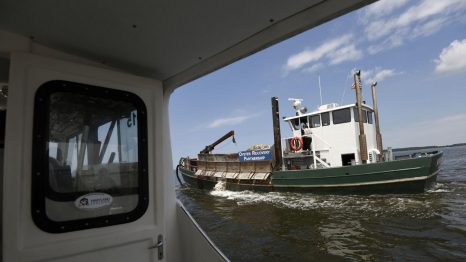 Shells carrying millions of lab-grown baby oysters tumbled down the sides of a green-hulled boat named Robert Lee, and the $35,000 investment sunk into the Choptank River where it widens to meet the Chesapeake. The oysters, planted this past week, will grow there for two or three years before watermen scoop them back up and restaurants serve them fried or on ice. Nearby, other oyster reefs are restocked in the same manner but are off-limits to harvesting. These sanctuaries across bay tributaries help the shellfish recover from decades of disease outbreaks, and overfishing before that, and have been expanded in recent years to cover nearly a quarter of the bay’s 36,000 acres of oyster bars. Watermen could soon reclaim some of that territory. Read the rest here 12:01
Shells carrying millions of lab-grown baby oysters tumbled down the sides of a green-hulled boat named Robert Lee, and the $35,000 investment sunk into the Choptank River where it widens to meet the Chesapeake. The oysters, planted this past week, will grow there for two or three years before watermen scoop them back up and restaurants serve them fried or on ice. Nearby, other oyster reefs are restocked in the same manner but are off-limits to harvesting. These sanctuaries across bay tributaries help the shellfish recover from decades of disease outbreaks, and overfishing before that, and have been expanded in recent years to cover nearly a quarter of the bay’s 36,000 acres of oyster bars. Watermen could soon reclaim some of that territory. Read the rest here 12:01
Opinion: Governor should recognize value of Alaska groundfish industry – Al Burch
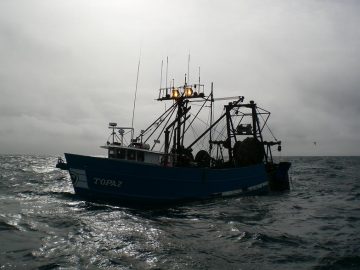 Something remarkable happened in my hometown of Kodiak recently. Roughly 1,000 people turned out to celebrate our groundfish trawl fishery. It was a family affair, with processing workers and their kids, fishing families, support businesses and local officials all participating in the parade and the barbecue picnic that followed. More than 2,000 meals were served and $17,000 was raised for the local Brother Francis Shelter. For me this was very special. My brother and I were some of the pioneers of the trawl fishery here in Kodiak. We started from scratch when the United States claimed a 200-mile zone. I remember the foreign fleets off our shores, and once they were replaced by U.S. vessels like ours,,, Read the rest here 11:06
Something remarkable happened in my hometown of Kodiak recently. Roughly 1,000 people turned out to celebrate our groundfish trawl fishery. It was a family affair, with processing workers and their kids, fishing families, support businesses and local officials all participating in the parade and the barbecue picnic that followed. More than 2,000 meals were served and $17,000 was raised for the local Brother Francis Shelter. For me this was very special. My brother and I were some of the pioneers of the trawl fishery here in Kodiak. We started from scratch when the United States claimed a 200-mile zone. I remember the foreign fleets off our shores, and once they were replaced by U.S. vessels like ours,,, Read the rest here 11:06
‘Deadliest Catch’ crew joins Fish for Kids program in Bristol Bay
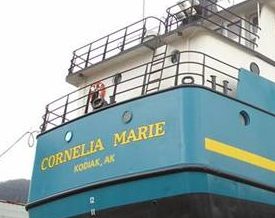 Leave it to the crew of “Deadliest Catch to liven things up, even when it comes to a philanthropic effort by fishermen and Peter Pan Seafoods to provide salmon meals to local school children and raise funds for fisheries education. The salmon tender Cornelia Marie and its crew combined efforts recently to support the Fish for Kids effort, which for the past decade has accepted donations of fish from fishermen in the Bristol Bay region in an effort to bring top-quality local salmon to school children in the region. This year, some 12,000 pounds were donated to Fish for Kids. The crew of the Cornelia Marie offered a 10-cent bonus for every pound of fish donated to the program. Read the rest here 10:07
Leave it to the crew of “Deadliest Catch to liven things up, even when it comes to a philanthropic effort by fishermen and Peter Pan Seafoods to provide salmon meals to local school children and raise funds for fisheries education. The salmon tender Cornelia Marie and its crew combined efforts recently to support the Fish for Kids effort, which for the past decade has accepted donations of fish from fishermen in the Bristol Bay region in an effort to bring top-quality local salmon to school children in the region. This year, some 12,000 pounds were donated to Fish for Kids. The crew of the Cornelia Marie offered a 10-cent bonus for every pound of fish donated to the program. Read the rest here 10:07
Fish crime does not pay: Freeport fisherman Beau Gillis speaks about his heavy sentence
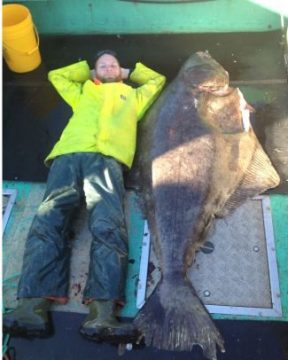 “It’s totally not worth it, fish crime does not pay,” said the Freeport fisherman. Gillis was recently sentenced to about $70,000 in penalties for not claiming 1,100 pounds of halibut he caught on June 10, 2015. “It was a great day … until it wasn’t,” said Gillis. “I got greedy. I did it. I pled guilty. “I do find it’s excessive but I’m a warning to others not to do this. It’s a conservation measure to protect a good fishery, it’s a laudable goal.” Fishery Officers found about 800 pounds of halibut on the truck Gillis was driving when they pulled him over and the rest they found aboard Gillis’ boat. Gillis received $10,000 in fines from the judge at sentencing on July 11. The judge also imposed a five-month suspension from ground fishing to be served in 2017, which will mean missing the whole season. (It gets real expensive as the story continues.) Read the rest here 09:47
“It’s totally not worth it, fish crime does not pay,” said the Freeport fisherman. Gillis was recently sentenced to about $70,000 in penalties for not claiming 1,100 pounds of halibut he caught on June 10, 2015. “It was a great day … until it wasn’t,” said Gillis. “I got greedy. I did it. I pled guilty. “I do find it’s excessive but I’m a warning to others not to do this. It’s a conservation measure to protect a good fishery, it’s a laudable goal.” Fishery Officers found about 800 pounds of halibut on the truck Gillis was driving when they pulled him over and the rest they found aboard Gillis’ boat. Gillis received $10,000 in fines from the judge at sentencing on July 11. The judge also imposed a five-month suspension from ground fishing to be served in 2017, which will mean missing the whole season. (It gets real expensive as the story continues.) Read the rest here 09:47
Coast Guard rescues 8 from burning fishing vessel off Oahu
 The Coast Guard rescued eight crewmembers from a burning ship two miles offshore Oahu, Thursday. Eight people are safe after a rescue and assist team from USCGC Galveston Island (WPB-1349) fought and extinguished an engineroom fire aboard commercial fishing vessel Lady Anna two miles south of Honolulu Harbor. “We were in the right place at the right time,” said Lt. Ryan Ball, commanding officer of USCGC Galveston Island. “This was a combined effort between the Galveston Island crew, the watchstanders at Sector Honolulu and rescue boat crews from Station Honolulu and Honolulu Fire Department. Watchstanders at Sector Honolulu Command Center overheard a transmission on VHF channel 16 at 4:30 p.m. regarding a fire aboard the 78-foot fishing vessel Lady Anna. Watchstanders established communication with the vessel, directed the launch of a 45-foot Response Boat-Medium crew from Station Honolulu and diverted the nearby Galveston Island crew to assist. Read the story here 07:59
The Coast Guard rescued eight crewmembers from a burning ship two miles offshore Oahu, Thursday. Eight people are safe after a rescue and assist team from USCGC Galveston Island (WPB-1349) fought and extinguished an engineroom fire aboard commercial fishing vessel Lady Anna two miles south of Honolulu Harbor. “We were in the right place at the right time,” said Lt. Ryan Ball, commanding officer of USCGC Galveston Island. “This was a combined effort between the Galveston Island crew, the watchstanders at Sector Honolulu and rescue boat crews from Station Honolulu and Honolulu Fire Department. Watchstanders at Sector Honolulu Command Center overheard a transmission on VHF channel 16 at 4:30 p.m. regarding a fire aboard the 78-foot fishing vessel Lady Anna. Watchstanders established communication with the vessel, directed the launch of a 45-foot Response Boat-Medium crew from Station Honolulu and diverted the nearby Galveston Island crew to assist. Read the story here 07:59
A Maine lobsterman rescues a very lucky dog off North Haven
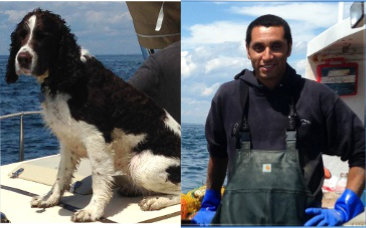 Corey Beverage, of North Haven, was on the water when he saw Maddie, a dog, in the water, officials with the Maine Marine Patrol said. Maddie’s owner was on her owner’s recreational boat, and her owner did not immediately notice her swimming, officials said. “Beverage saw her and plucked her from the water, most certainly saving her life,” officials said. Maddie’s owner was found searching for her in the area. “Thanks to Corey and the other local fishermen, this story has a happy ending,” officials said. “It’s also a reminder to keep a very close eye on your pets if you bring them on board this summer.” Link 21:16
Corey Beverage, of North Haven, was on the water when he saw Maddie, a dog, in the water, officials with the Maine Marine Patrol said. Maddie’s owner was on her owner’s recreational boat, and her owner did not immediately notice her swimming, officials said. “Beverage saw her and plucked her from the water, most certainly saving her life,” officials said. Maddie’s owner was found searching for her in the area. “Thanks to Corey and the other local fishermen, this story has a happy ending,” officials said. “It’s also a reminder to keep a very close eye on your pets if you bring them on board this summer.” Link 21:16
N.J. fishermen fear loss of huge underwater sand hill, the Manasquan Ridge
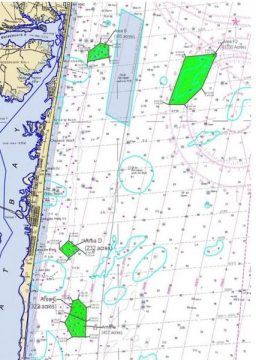 The appearance of the 123-foot offshore supply vessel Scarlett Isabella on the Manasquan Ridge is a bad omen to Capt. Jim Lovgren, a Point Pleasant Beach commercial fishermen. The Scarlett was in the hire of the Bureau of Ocean Energy Management, which is looking for potential sand on the outer continental shelf that could be pumped up onto the Jersey beach. Tampering with these sand beds, which are long-established fishing areas, could reshape the fishing communities at the Shore, fishermen say. The ridge, which starts to rise off the ocean floor 5 ½ miles southeast of Manasquan Inlet, is one of those potential resources of sand. “Last year word was that Manasquan Ridge was a last resort for beach replenishment use. The fact that they are paying a survey vessel to crisscross it clearly says something different,” said Lovgren, who sits on the Executive Board of the Garden State Seafood Association. Fishermen have been weary of a conflict with the Army Corps of Engineers over the ridge, and others nearby, which they depend on to hold fish. Read the story here 17:48
The appearance of the 123-foot offshore supply vessel Scarlett Isabella on the Manasquan Ridge is a bad omen to Capt. Jim Lovgren, a Point Pleasant Beach commercial fishermen. The Scarlett was in the hire of the Bureau of Ocean Energy Management, which is looking for potential sand on the outer continental shelf that could be pumped up onto the Jersey beach. Tampering with these sand beds, which are long-established fishing areas, could reshape the fishing communities at the Shore, fishermen say. The ridge, which starts to rise off the ocean floor 5 ½ miles southeast of Manasquan Inlet, is one of those potential resources of sand. “Last year word was that Manasquan Ridge was a last resort for beach replenishment use. The fact that they are paying a survey vessel to crisscross it clearly says something different,” said Lovgren, who sits on the Executive Board of the Garden State Seafood Association. Fishermen have been weary of a conflict with the Army Corps of Engineers over the ridge, and others nearby, which they depend on to hold fish. Read the story here 17:48
Longtime Gloucester Fisherman Sam Parisi discusses regulatory issues he wants you to know about
 My name is Sam Parisi I am a proud third generation Fisherman from Gloucester, Massachusetts. My involvement in the fishing industry spans well over fifty years, and sadly, I have never seen our fleet, our shore side infrastructure in Gloucester, and New England in the alarming position it is at this moment. This is the result of unacceptable mismanagement of our fishery at the hands of the NOAA/NMFS bureaucracy, which is expanding. Another troubling issue is the at-sea monitoring program. The S-K funds, and S. 3087 “American Fisheries Advisory Committee Act”, introduced by Senator Dan Sullivan, R-AK, is also discussed. Read the rest here 15:39
My name is Sam Parisi I am a proud third generation Fisherman from Gloucester, Massachusetts. My involvement in the fishing industry spans well over fifty years, and sadly, I have never seen our fleet, our shore side infrastructure in Gloucester, and New England in the alarming position it is at this moment. This is the result of unacceptable mismanagement of our fishery at the hands of the NOAA/NMFS bureaucracy, which is expanding. Another troubling issue is the at-sea monitoring program. The S-K funds, and S. 3087 “American Fisheries Advisory Committee Act”, introduced by Senator Dan Sullivan, R-AK, is also discussed. Read the rest here 15:39
This timely NOAA announcement just showed up! New “pre-proposal” process provides more guidance for Saltonstall-Kennedy grant applicants Click here 15:59
‘Total devastation’: Dorset Fisheries plant in Norman’s Cove-Long Cove burns to the ground
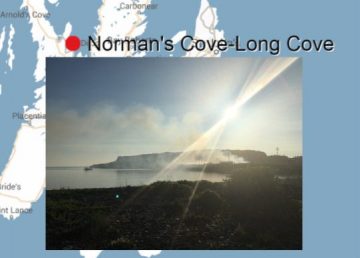 A massive fire that broke out Thursday night in Norman’s Cove-Long Cove has flattened the fish plant in the small Trinity Bay community, putting hundreds out of work. The Dorset Fisheries plant, a processor that employed about 240 people at its peak in a town of about 700, burned to the ground overnight in a massive industrial fire. “It’s total devastation for this little town, I can tell you,” Bonnie Newhook, who worked at the fish plant since it opened, told CBC News Friday morning. The plant had been opened for almost 30 years, and served as an anchor for fish plant workers and fishermen in the community and neighbouring areas. “It’s pretty hard to watch after all those years, seeing it go up in smoke,” Newhook said. Read the rest here 15:02
A massive fire that broke out Thursday night in Norman’s Cove-Long Cove has flattened the fish plant in the small Trinity Bay community, putting hundreds out of work. The Dorset Fisheries plant, a processor that employed about 240 people at its peak in a town of about 700, burned to the ground overnight in a massive industrial fire. “It’s total devastation for this little town, I can tell you,” Bonnie Newhook, who worked at the fish plant since it opened, told CBC News Friday morning. The plant had been opened for almost 30 years, and served as an anchor for fish plant workers and fishermen in the community and neighbouring areas. “It’s pretty hard to watch after all those years, seeing it go up in smoke,” Newhook said. Read the rest here 15:02
Hawaii’s longline fleet hits Bigeye tuna quota early
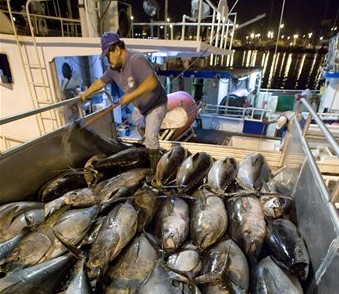 The longline fleet, nearly all of which is based in Honolulu, will now have to travel farther to fish for bigeye, a factor that could lead to better prices for Big Island fisherman bringing in tuna with handlines. Fishing quotas are set years in advance by the Western Pacific Fisheries Commission, an international group of 27 countries. They are based on historical levels of catch “and then reduced quite a bit,” said Eric Kingma, international fisheries enforcement coordinator for the Western Pacific Fisheries Management Council. Hawaii’s longline fleet makes up about 3 percent of the worldwide bigeye catch. It’s not clear why this year’s quota of 3,554 metric tons was reached so early. Last year, the fishery closed in August, the earliest the region had ever been restricted. “It’s the same number of hooks (in the water),” said Hawaii Longline Association president Sean Martin. Catch rates are 40 percent higher than historical numbers, he said. Read the rest here 14:16
The longline fleet, nearly all of which is based in Honolulu, will now have to travel farther to fish for bigeye, a factor that could lead to better prices for Big Island fisherman bringing in tuna with handlines. Fishing quotas are set years in advance by the Western Pacific Fisheries Commission, an international group of 27 countries. They are based on historical levels of catch “and then reduced quite a bit,” said Eric Kingma, international fisheries enforcement coordinator for the Western Pacific Fisheries Management Council. Hawaii’s longline fleet makes up about 3 percent of the worldwide bigeye catch. It’s not clear why this year’s quota of 3,554 metric tons was reached so early. Last year, the fishery closed in August, the earliest the region had ever been restricted. “It’s the same number of hooks (in the water),” said Hawaii Longline Association president Sean Martin. Catch rates are 40 percent higher than historical numbers, he said. Read the rest here 14:16
No compensation for East Coast shrimp fishermen hit by Northern Shrimp quota changes
 The federal fisheries minister has flatly rejected the notion of compensating fishermen in Nova Scotia and New Brunswick who are facing reductions in their northern shrimp quotas. During a news conference in Halifax July 21, Dominic LeBlanc said the fishery is still viable for those fishermen, so compensation is not needed. “We wouldn’t compensate people who are prosecuting a viable fishery,” said LeBlanc, standing next to the Halifax Harbour at the Bedford Institute of Oceanography. “But we’re sending a signal to both the inshore fleet in Newfoundland and Labrador and to the offshore sector in other provinces… that there are tough years ahead, it would appear, in terms of the scientific advice.” LeBlanc recently scrapped the last-in, first-out (LIFO) policy and replaced it with a system of proportional sharing. He said his decision on LIFO was based on science and is in the best interest of the shrimp stocks, which are in decline. Read the rest here 11:43
The federal fisheries minister has flatly rejected the notion of compensating fishermen in Nova Scotia and New Brunswick who are facing reductions in their northern shrimp quotas. During a news conference in Halifax July 21, Dominic LeBlanc said the fishery is still viable for those fishermen, so compensation is not needed. “We wouldn’t compensate people who are prosecuting a viable fishery,” said LeBlanc, standing next to the Halifax Harbour at the Bedford Institute of Oceanography. “But we’re sending a signal to both the inshore fleet in Newfoundland and Labrador and to the offshore sector in other provinces… that there are tough years ahead, it would appear, in terms of the scientific advice.” LeBlanc recently scrapped the last-in, first-out (LIFO) policy and replaced it with a system of proportional sharing. He said his decision on LIFO was based on science and is in the best interest of the shrimp stocks, which are in decline. Read the rest here 11:43
Ocean City Boat Featured In ‘Wicked Tuna’ Outer Banks Season Premiere Monday
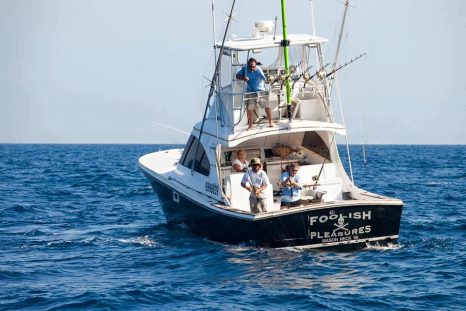 The National Geographic Channel’s fishing reality show returns for a new season on Monday and will feature the long-awaited debut of the popular Ocean City-based “Foolish Pleasures” and its colorful Captain Dale Lisi and his crew of characters. Lisi and the “Foolish Pleasures” based at the Ocean City Fishing Center in West Ocean City, were chosen last fall as one of a handful to participate in and appear on the latest season of “Wicked Tuna.” The National Geographic Channel’s wildly popular show follows groups of salty fishermen as the make a living battling monster Bluefin tuna the old school way with a rod and reel. Lisi and his crew, including mates Will Hathaway and Ed Gross, certainly fit the bill. Read the story here 11:17
The National Geographic Channel’s fishing reality show returns for a new season on Monday and will feature the long-awaited debut of the popular Ocean City-based “Foolish Pleasures” and its colorful Captain Dale Lisi and his crew of characters. Lisi and the “Foolish Pleasures” based at the Ocean City Fishing Center in West Ocean City, were chosen last fall as one of a handful to participate in and appear on the latest season of “Wicked Tuna.” The National Geographic Channel’s wildly popular show follows groups of salty fishermen as the make a living battling monster Bluefin tuna the old school way with a rod and reel. Lisi and his crew, including mates Will Hathaway and Ed Gross, certainly fit the bill. Read the story here 11:17

































